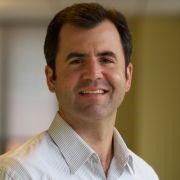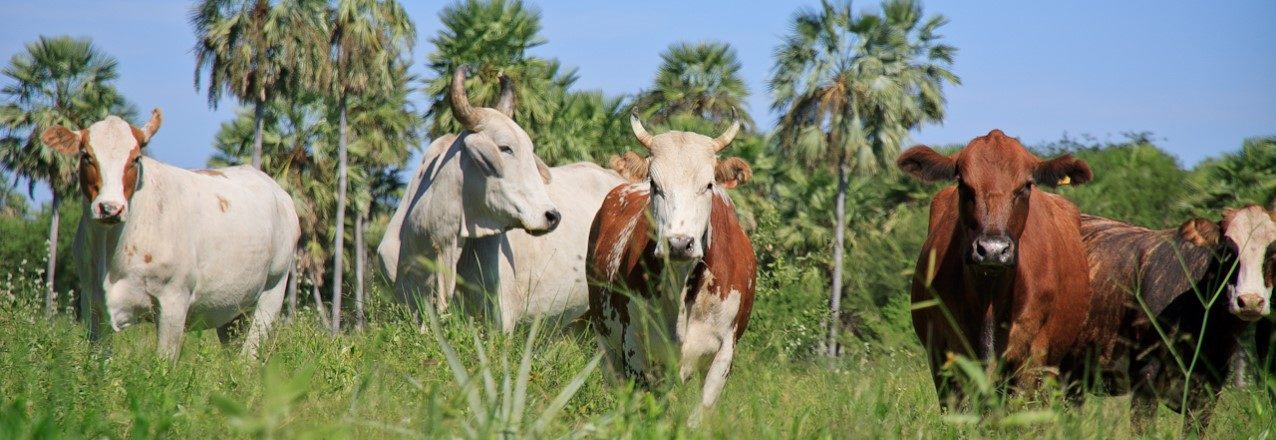 Ryan Sarsfield is the Latin America commodities manager with World Resources Institute’s Global Forest Watch (GFW) team. He works to reduce the environmental impact of key commodities in Latin America through collaboration with corporate and NGO partners and the development of tools to reduce deforestation and supply chain risk.
Ryan Sarsfield is the Latin America commodities manager with World Resources Institute’s Global Forest Watch (GFW) team. He works to reduce the environmental impact of key commodities in Latin America through collaboration with corporate and NGO partners and the development of tools to reduce deforestation and supply chain risk.
Tell us about the development of the “Tierras Indígenas” indigenous lands platform in Paraguay under the Tenure and Global Climate Change program:
This activity under USAID’s Tenure and Global Climate Change (TGCC) program developed an interactive platform that provides maps and critical information about lands and territories of indigenous peoples and communities in Paraguay. The activity focused on the intersection of land tenure, deforestation and the private sector, which is a tricky place to work given the complexity of these issues and how they interact. In Paraguay (like so many places in the world), commercial agriculture is expanding into previously intact ecosystems – Paraguay’s Chaco forest, in this case – and this expansion is both an economic boon to some, and a cause of environmental degradation and land dispossession to others. In particular, the expansion has created land conflicts with the indigenous people of the Chaco, who have seen much of the region’s forest turned to cattle ranches over the last 15 years. As the country’s agricultural exports grow, so will the demand for agricultural production that is socially just and environmentally sustainable. This poses an interesting question: How would a well-meaning company in the beef sector go about reducing their exposure to these risks, and indeed reduce negative impacts of their investment on the ground?
Through our work, it became clear that one of the essential “raw materials” for responsible investment was data, specifically map data about indigenous lands in Paraguay, along with the varied levels of legal status or recognition that these lands exhibit. My day-to-day engagement with companies usually focuses on forest and deforestation data, which comes from satellites and is delivered via World Resources Institute’s Global Forest Watch platform. But it was clear that a locally managed platform would be best suited fill the gap on indigenous data. Under the Tenure and Global Climate Change program, we forged an excellent partnership with the Federation for the Self-Determination of Indigenous Peoples (FAPI) in Paraguay, and they led the development process of a mapping platform built on Global Forest Watch’s technology called Map Builder, which they continue to manage now that the project has wrapped up.
Why is this work important?
FAPI and its members already had a great deal of digital map data, and in fact, so did the government, but these data simply weren’t freely available. The general trend towards precise digital land mapping has been a great advance, but the creation of the maps is only one part of the process. How can data be distributed publicly and transparently, and how can potential users access the data, analyze it and best use it to positively influence the conditions on the ground?
As FAPI developed the project with its members and other partners, including 12 indigenous groups, it became clear that they saw the project as a medium to express their perspective on their own lands, and a means to reach audiences in Paraguay and abroad. At the same time, companies and financiers connected to the beef industry expressed their interest in having better indigenous data to work with as they carried out due diligence on their investments. Large-scale commercial agriculture and indigenous peoples are hardly allies in Paraguay, but in this case, the shared goal of obtaining better data was a helpful alignment.
What are key achievements/successes from this Tenure and Global Climate Change activity?
- The Tenure and Global Climate Change team’s local partners launched the platform in late November 2017, called Tierras Indígenas Paraguay, which is now live online. More than 120 people attended the launch of what is the first publicly accessible online map of Paraguay’s indigenous lands, and the data was also featured on the global indigenous and traditional lands platform LandMark, filling a gap in Paraguay’s data.
- Behind the platform itself, though, is the collaborative effort and data management that made it possible. FAPI and its collaborators have already taken steps to continue the development process, and this ongoing management is what will make Tierras Indígenas Paraguay an enduring asset and useful tool. As more data is collected, the status of individual lands change, and the pressures on their communities evolve, the platform has the potential to maintain and even increase its usefulness.
What were the key lessons from this TGCC activity?
- As the project sought to apply geographic and information systems (GIS) and technical assets (Global Forest Watch’s Map Builder) to a politically sensitive and enduring challenge at the local scale (the lack of publicly available indigenous data), working with the right local partner was far and away the key to bridging this gap and successfully carrying out the project goals. FAPI was ideal in serving as a trusted convener for their indigenous member organizations (magnifying the reach of the project). They were savvy and connected regarding national politics around indigenous land issues and skilled in managing partner meetings and media outreach.
- Projects that increase data transparency and availability may be successful on their own terms, but will only be effective means to an end if users are aware of the data, accept the value of the work and make use of it. Outreach across many avenues was, and continues to be, critical to a successful and ongoing use of the platform. The platform was launched in a well-attended event that included indigenous groups, the private sector (meatpacking companies, banks, etc.), Paraguayan ministries and a range of domestic and international civil society organizations and received extensive press coverage in Paraguay and abroad.
Where can I find more information on the project?
More information on USAID’s TGCC activity in Paraguay can be found on Land-Links.org here


